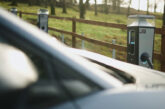
Sean McDowell, Fire Alarm Service Engineer at Lantern Fire & Security, shares his frustrations about the lack of value some will place on safe isolation in the fire alarm industry.
Within the fire industry there seems to be a nonchalant approach to safe isolation. Why bother? After all, no one’s going to turn the switchgear back on…
Looking at the fire alarm world, when we read BS 5839-1:2017, it clearly states in 25.2(c) that the need for a double pole isolator has been withdrawn from the standard. This is, as it states, under the assumption that safe isolation will be carried out.
That’s great, but how many engineers know how to do so, why to do so, and have the appropriate equipment (lockout kit, AVI and proving unit) to hand?
It should also be highlighted that article 12, para 187 of the EAWR 1989 refers to safe isolation and the locking off of switchgear; article 13 also refers to electrical equipment that has been made dead from being prevented from being re-energised.
Safe isolation training
When undertaking my electrical training, the first thing that was taught was safe isolation, and this had to be demonstrated before being allowed anywhere near a circuit or board.
Thankfully, decent companies like ZZEUS Training will teach safe isolation as part of their course material, but why is it not happening as standard across the industry?
Is it because individuals don’t feel the need, especially when they’ve switched the switchgear (and locked out/off), keyed the isolator switch to off, and assumed all must be good? The reality is, you never know, so check with an AVI and prove to yourself that all is good before you begin the work.
The same can apply when working on emergency lighting; you never know if during the install a borrowed neutral has occurred. This can give you a little surprise if you haven’t taken the few short moments to check properly.
In short, don’t become complacent, do the appropriate safety tasks, and make sure you use the right equipment. If you haven’t been trained in safe isolation, simply ask. After all, it’s in the engineers’ best interests to work as safely as possible at all times.
Remember, a competent person is someone with the requisite skills or experience AND appropriate equipment. Understanding how, why and what equipment and procedures you need to use and follow will not only keep you safe but others as well.
Read more industry feature articles here








